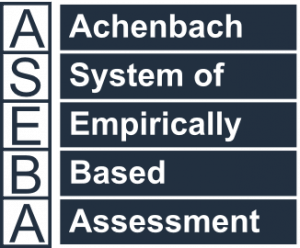Technical Support for ASEBA® Software Products
Using the ASEBA with People Who May Identify as Nonbinary
Concepts of gender are changing rapidly. Until recently, ASEBA forms asked respondents to indicate the self-identified gender of the person being assessed in terms of binary alternatives. This is because—when the ASEBA population norms were obtained—most people identified themselves as female or male, regardless of the biological sex indicated on their birth certificates.
ASEBA-Web. The item for gender in ASEBA-Web now includes an option for “Another” where respondents can specify a person’s current gender identification if it differs from female or male. If the female or male option is chosen, ASEBA-Web can display the assessed person’s scale scores in relation to percentiles and T scores for female or male norms, respectively. If “Another” is chosen (or if there is no response to the gender item), users can have ASEBA-Web score the ASEBA form in relation to norms for females, males, or both. If users elect to have a form scored for both, ASEBA-Web can display scales on which the assessed person obtains scores in the borderline or clinical range according to norms for either females or males. This enables users to decide whether help may be needed in areas where borderline/clinical range scores are obtained in relation to either female or male norms.
Paper Forms (including forms printed from ASEBA-Web). On the latest versions of ASEBA paper forms, items for identifying gender are open-ended, enabling respondents to describe a person’s current gender however they wish. When users score paper forms on hand-scored profiles or via ASEBA-PC or ASEBA-Web, they can elect female or male norms or both. In addition to making gender items open-ended, we have re-worded other items to make them nonbinary.
In all cases, users should examine responses to each strength and problem item—plus respondents’ comments—in order to obtain a detailed picture of the assessed person’s needs.
Nonbinary Scale Scores. Nonbinary raw scores are computed for each scale by summing the ratings of the items comprising the scale. On hand-scored profiles, the nonbinary raw scale score is displayed beneath the items comprising the scale, in the space labeled Total. On profiles scored by ASEBA-PC and ASEBA-Web, the nonbinary raw scale score is generated as output that can be exported for analysis and is displayed beneath the bar graph for that scale, in the space labeled Raw Score (sum). These raw scores can be analyzed without requiring gender designations. However, for statistical analyses, users may elect to group individuals according to gender designations of their choice.
